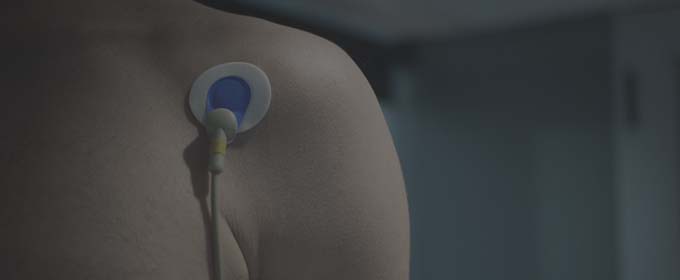DIAGNOSTIC METHODS
Detailed clinical evaluation can be combined with the use of diagnostic technologies to explore the underlying nature of the condition and its cause. In many situations several different approaches may be used to fully assess the individual before defining best management.
Imaging
Modern technology has advanced the ability to diagnose and treat medical conditions. Various imaging techniques are used to investigate symptoms. Some of the imaging techniques commonly used are:
- MRI (Magnetic Resonance Imaging)
- CT (Computed Tomography)
- Diagnostic Ultrasound
- X-Ray
- Isotope Bone Scanning
Diagnostic Ultrasound Imaging
Professor Speed has a special interest in diagnostic musculoskeletal ultrasound imaging. This is an important tool in establishing a diagnosis, planning treatment, performing interventional management and subsequent monitoring of patients with a spectrum of musculoskeletal conditions – from tendon injuries to arthritis. It is no surprise then that the technique is often described as the ‘rheumatologist’s stethoscope’.
Not only does diagnostic ultrasound provide images of high quality that have a strong influence on management, the technique is performed at the time of seeing the physician in clinic, speeding up the process of diagnosis and management planning. Injection procedures are also performed under ultrasound guidance to improve accuracy.
Sleep and Activity Monitoring
Sleep is an essential part of health, well-being and recovery from illness and injury. A disrupted sleep pattern can result in poor recovery, increased pain weight gain and fatigue.
Monitoring sleep can be performed through simple or complex approaches, and the methods used are influenced by the clinical scenario and the suspected conditions. For example, when sleep apnoea is suspected monitoring with respiratory equipment in a sleep laboratory or at home is required. When the question is related to abnormalities in the sleep rhythm, simple monitors worn for a few days and nights can be used as the initial approach. The simplest of these are activity monitors, as available in retail stores, but more sophisticated monitors can examine heart rate variability and activity patterns to allow greater accuracy and sensitivity of assessment.
Laboratory Tests
Typically, these are blood tests. These are used to check health and disease markers, and can also be used to assess nutritional status.
Biomechanical Assessment
Biomechanical assessment approaches are used to evaluate the body during motion. This is important, yet often neglected in the assessment of a patient who has a musculoskeletal condition. Examples include the sportsperson with a recurring injury who may be evaluated in relation to their sporting technique to look for a cause. Or an individual with arthritis of the knee who may benefit from gait analysis to change the load imposed through the affected joint when walking.
Isokinetics Evaluation
This is a specific form of strength and endurance testing. It allows identification of muscle strength deficits that may not be apparent from other forms of assessment. Such muscle imbalances are a common cause of injury and are often seen in patients with arthritis. Once detected, rehabilitation programmes can be designed to correct them.
Exercise Testing and Fitness Assessment Protocols
Fitness testing has a wide range of formats, to suit the needs of the individual. Specific methods and protocols are used according to the circumstances and goals. Assessment using this approach is not just for the athletic individual – it has many uses in those who have medical conditions, and those who are simply ‘unfit’.




